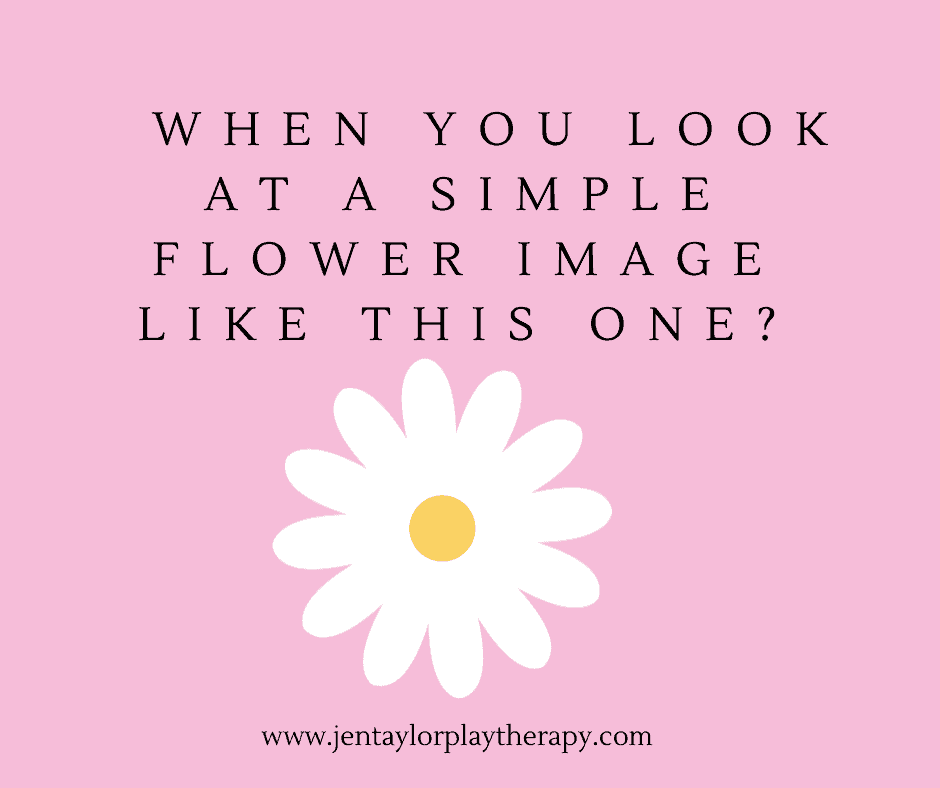What happens when you look at a single flower image? A surprisingly simple way to reduce stress levels
What happens when you look at a single flower images? Researchers in Japan set out to determine if looking a a single flower image (not even an actual flower) would have a positive impact on stress levels. Many previous research studies have shown that looking at pictures of nature scenes (like forests or oceans) is correlated to a reduction in stress symptoms but the impact of just a single flower had not yet been determined.
Take a Look At A White Daisy

In this study, an image of a single daisy type white chrysanthemum was selected for use. Why a white daisy? Apparently, when people are asked to draw a flower, the first one that comes to mind for a majority of people is the daisy shape.
This single flower (just the flower part without the stem or any leaves and on a solid black background) was show to study participants after being shown a high-arousal negative image. Examples of high-arousal negative images include awful things like violence, injuries and car crashes.
Two trials were conducted: in the first subjects were shown a high arousal image and then either a) the flower image b) a mosaic of fragments of the flower image or c) a visual fixation point. In the second trial, the high arousal image was followed by either a) the flower image, b) a chair (deemed a neutral image) or c) a blue sky with clouds (deemed a positive non-floral image).
Systolic and diastolic blood pressure readings were taken throughout the experiments.
What Happens in Your Body
As expected, mean blood pressure was lower when participants viewed the flower versus the fixation point or the mosaic flower, but what was unexpected is that the flower image actually reduced mean blood pressure to a level lower than the baseline.
Both the flower image and the blue sky had a similar positive impact in changing mood from negative to positive (with the blue sky having the most overall impact).
However, only the flower (not the sky) caused a reduction in mean blood pressure. It was determined that viewing a simple flower image could in fact change a negative mood into a more positive one and also decrease blood pressure.
It was determined that viewing a simple flower image could in fact change a negative mood into a more positive one and also decrease blood pressure.
Mochizuki-Kawai, H., Matsuda, I., & Mochizuki, S. (2020). Viewing a flower image provides automatic recovery effects after psychological stress. Journal of Environmental Psychology, 70, 101445. https://doi.org/10.1016/j.jenvp.2020.101445
A Look at the Research
The power of the single flower image was then studied in regards to salivary cortisol levels. During this study, the high-arousal images were once again paired with the flower image, the flower fragment mosaic or the fixation point.
Once again, only the flower image was shown to significantly decrease stress during the recovery phase. One final examination looked at fMRI images of the brain during these conditions. Through this imagery it was discovered that the flower image was effective in decreasing the amygdala-hippocampus activation that occurred after viewing the high arousal images.
Researchers speculated that the flower image was a distraction tool that was helped prevent the recall of the stressful images.
The brief viewing of this single flower image was shown to be effective at reducing negative emotions and created better functioning of both the cardiovascular and endocrine systems!
Having such a simple tool available to help reduce stress and regulate unpleasant emotions and is one possible tool for interrupting ruminating thoughts or unpleasant flashbacks.
If you found this helpful, subscribe to my mailing list for tips and strategies to help make the unmanageable or seemingly impossible feel a little more do-able! My focus is on actionable ways to thrive emotionally, excel professionally, and energize your own creativity.

0 comments